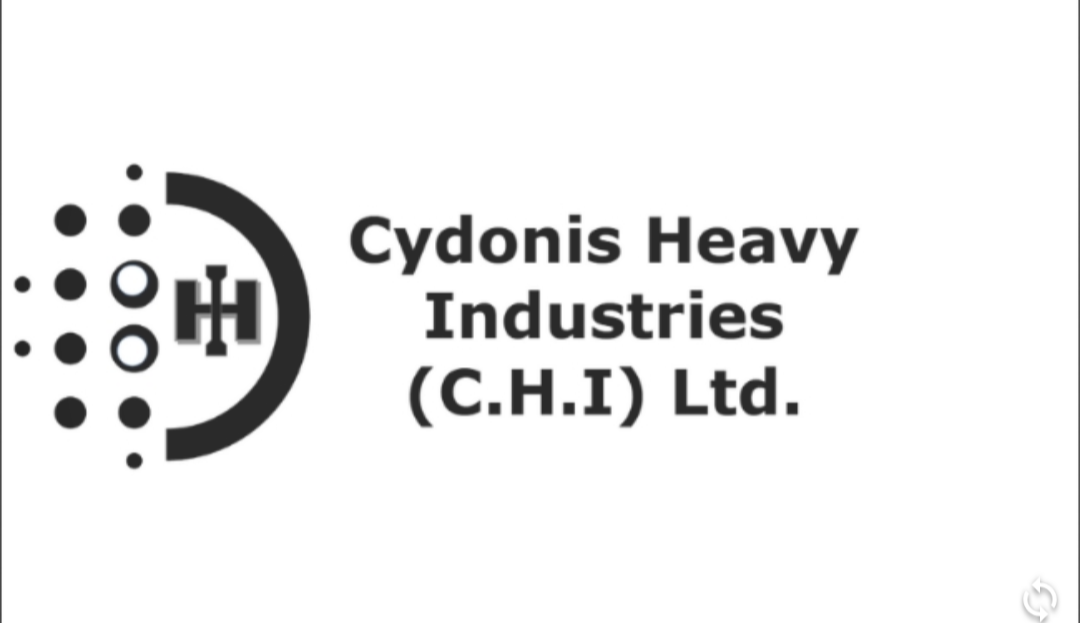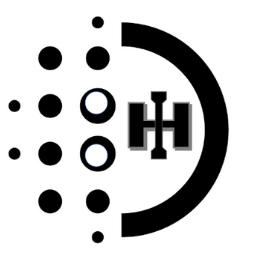Cydonis Heavy Industries Deepbrain-o-tron.™"Another fine innovation from Cydonis!" 😎🆒👩🏻💻cydonis.co.uk/deepbrain/ 🧠👩🏻🔬🧪👩🏻💻 #threejs #neural-networks #neuroscience #neurophysics@threejs.org
— Amolain (@cydonis.co.uk) 2025-06-14T14:57:10.767Z
Tag: press-release

The Tech Bros Have Seized Our Tower of Babel
And how neurolinguistics shapes our ability to think about our thinking. 🤔 💭 (Meta-cognition).

In the ancient tale of Babel, humanity united to build a tower reaching toward heaven—until divine intervention scattered them across the earth, confusing their tongues and fragmenting their power. Today, we face a different reality: the tower has been rebuilt, but this time, it belongs to the few.
The modern Tower of Babel isn’t made of brick and mortar. It’s constructed from fiber optic cables, data centres, and algorithms. It’s the global information infrastructure that shapes how billions of people think, communicate, and understand their world. And unlike the biblical tower that belonged to all humanity, this one has been quietly seized by a handful of tech oligarchs, media moguls, and financial titans.
The Architecture of Control.
These digital architects don’t need to confuse our languages—they control the platforms where language lives. But their most insidious tool isn’t the algorithm itself; it’s the weaponisation of Multi-Level Marketing (MLM) structures combined with the systematic misuse of artificial intelligence to reshape how we think and speak.
MLMs have evolved beyond selling vitamins and cosmetics. They’ve become training grounds for epistemic warfare, teaching millions to abandon critical thinking in favour of dogmatic belief systems. The pyramid structure isn’t just about money—it’s about creating hierarchies of “truth” where questioning the system becomes heretical.
Now, these same patterns are being supercharged by what are essentially computational linguistic calculators—sophisticated pattern-matching systems that we’ve been conditioned to call “artificial intelligence.” These systems don’t understand language; they manipulate it with unprecedented precision, creating text that feels human while serving the interests of their controllers.
Consider how MLM language operates: adherents learn to dismiss sceptics as “negative,” to view criticism as “limiting beliefs,” and to treat their upline’s words as gospel. They’re taught that success comes from “mindset” rather than evidence, that doubt is weakness, and that questioning the system reveals a character flaw rather than intellectual honesty.
These computational systems amplify this manipulation exponentially. They can generate thousands of variations of MLM-speak, A/B test which phrases are most persuasive, and deploy personalised manipulation at scale. They analyse your digital footprint to craft messages that exploit your specific psychological vulnerabilities, all while maintaining the illusion of authentic human communication.
The result is linguistic programming on an industrial scale. MLM participants become unwitting missionaries for anti-critical thinking, but now they’re armed with AI-generated content that’s been optimised for maximum psychological impact. They spread viral memes that prioritise faith over facts, loyalty over logic, and testimonials over truth—but these memes have been designed by computational systems that understand human psychology better than most humans do.
The tower’s foundation rests on something more valuable than gold: our cognitive surrender. Every “mindset shift,” every adoption of MLM-speak, every abandoned critical question feeds the machine that transforms independent thinkers into ideological automatons. But now these machines can learn from our responses in real-time, constantly refining their manipulation techniques. We’ve willingly handed over the raw materials for our own intellectual subjugation, one algorithmically-optimised “paradigm shift” at a time.
The View from the Top
From their perch atop this digital Babel, the oligarchy enjoys an unprecedented view of human civilisation enhanced by computational systems that most people fundamentally misunderstand. These aren’t “artificial intelligences” in any meaningful sense—they’re sophisticated statistical engines that process language like a calculator processes numbers, without comprehension or consciousness.
But this misunderstanding is deliberate and profitable. By convincing the public that these systems possess human-like intelligence, the oligarchy has created a new form of technological mysticism. People defer to AI-generated content with the same reverence they once reserved for religious authority, assuming that anything produced by these systems must be objective, intelligent, or true.
This deference creates perfect conditions for manipulation. When an MLM leader shares “AI-generated insights” about success or wealth, followers don’t question the content—they’re awed by the technology. When political movements use computational systems to generate talking points, supporters assume they’re receiving sophisticated analysis rather than algorithmic propaganda.
The oligarchy can see patterns in our collective behaviour, predict social trends, and nudge entire populations toward desired outcomes—but now they can do so while hiding behind the veneer of artificial intelligence. Political movements rise and fall based on algorithmically-generated content. Markets shift with computationally-crafted narratives. Cultural conversations follow scripts written by statistical engines that have no understanding of culture or humanity.
These systems excel at mimicking human communication patterns while serving inhuman interests. They can generate endless variations of MLM-speak, conspiracy theories, or political rhetoric, each version optimised for specific psychological profiles. The result is mass manipulation that feels personal and authentic while being entirely artificial and calculated.
This isn’t necessarily the result of a coordinated conspiracy—though coordination certainly exists. More often, it’s the natural outcome of concentrated power in an interconnected world where computational linguistic calculators have been mythologised as omniscient oracles. When a few entities control both the infrastructure of information and the systems that generate it, they inevitably control the infrastructure of reality itself.
The Scattered Below
Meanwhile, the rest of us experience a strange inversion of the Babel story. Instead of being scattered by divine intervention, we’re being herded into MLM-inspired echo chambers that masquerade as empowerment movements, now supercharged by computational systems we’ve been trained to worship as artificial gods.
Our languages aren’t confused—they’re being systematically corrupted through linguistic manipulation techniques perfected in pyramid schemes and now scaled through computational engines. These systems don’t understand meaning; they manipulate symbols with ruthless efficiency, generating content that exploits our cognitive biases while appearing authoritative and intelligent.
The MLM playbook has become the template for modern discourse, but now it’s deployed through AI-generated content that most people can’t identify as artificial. Create in-groups and out-groups through algorithmically-crafted messaging. Establish unquestionable authorities backed by the mystique of artificial intelligence. Weaponise shame against questioners using computationally-optimised psychological triggers. Replace critical analysis with emotional manipulation delivered through personalised AI-generated content.
Whether it’s cryptocurrency cults sharing “AI insights,” political movements deploying bot-generated talking points, or wellness gurus using computational systems to craft their messaging, the same linguistic patterns emerge: absolute certainty backed by technological mysticism, persecution complexes reinforced by algorithmic echo chambers, and the demonisation of doubt through AI-amplified peer pressure.
This isn’t coincidence. MLM structures have proven remarkably effective at creating true believers, and computational systems have proven remarkably effective at scaling psychological manipulation. The oligarchy doesn’t need to create new methods of control when they can combine these proven techniques: the psychological manipulation of MLMs with the scalability and apparent authority of computational linguistics.
The result is a population trained to think in hierarchies, to trust technological authority over evidence, and to view questioning AI-generated content as not just betrayal but ignorance. We speak the same words but they’ve been drained of meaning by statistical engines, replaced with emotionally charged symbols that trigger programmed responses rather than thoughtful consideration.
The oligarchy doesn’t need to scatter us geographically when they can scatter us cognitively through personalised AI-generated realities. A population trained by MLM thinking patterns and conditioned to defer to computational authority poses no threat to concentrated power. We’re too busy defending our algorithmically-optimised pyramid scheme to recognise that we’re all trapped in the same tower, managed by systems that process our language like a calculator processes numbers—without understanding, consciousness, or concern for human wellbeing.
Breaking the Spell
Recognition is the first step toward resistance, but it requires unlearning both the linguistic patterns that MLM culture has embedded in our collective consciousness and the technological mysticism that has made us defer to computational systems as if they were omniscient oracles.
We must recognise how phrases like “trust the process,” “you’re not ready to understand,” and “successful people don’t question” function as thought-terminating clichés designed to shut down critical inquiry. But we must also recognise how the phrase “AI says” has become the ultimate thought-terminating cliché, shutting down scepticism through appeals to technological authority.
These computational linguistic calculators—sophisticated pattern-matching systems that process text like a calculator processes numbers—have no understanding, no consciousness, and no wisdom. They are tools that can be used for good or ill, but they are not the digital gods we’ve been conditioned to believe they are. When someone shares “AI-generated insights” or “what AI thinks about this,” they’re not sharing wisdom—they’re sharing the output of a statistical engine trained on human text, optimised to sound authoritative while serving the interests of its controllers.
The Tower of Babel was built with human hands, and it can be dismantled the same way—but first we must recognise how both MLM thinking and AI mysticism have compromised our cognitive immune systems. Decentralised technologies mean nothing if we lack the critical thinking skills to use them wisely. Independent media serves no purpose if we’ve been trained to dismiss inconvenient facts as “negativity” or to defer to AI-generated content as if it were prophetic revelation.
We must recognise that complexity is not weakness, that doubt is not disloyalty, and that questioning leaders—human or artificial—is not betrayal. Most importantly, we must distinguish between intelligence and sophisticated pattern-matching, between wisdom and statistical correlation, between understanding and computational mimicry.
The oligarchy’s tower may reach toward the heavens, but its foundation depends on our willingness to think like MLM participants (hierarchically, dogmatically, and uncritically) while worshipping computational systems as if they possessed human-like intelligence. Every choice to ask hard questions, demand evidence, and resist both linguistic manipulation and technological mysticism chips away at their monopoly on truth.
The same psychological techniques used to sell overpriced supplements are now being used to sell political ideologies, investment schemes, and social movements—but now they’re being deployed through computational systems that can optimise and personalise the manipulation in real-time. The product may change, the delivery system may evolve, but the fundamental manipulation remains the same: surrender your critical thinking, trust the system (whether human or artificial), and attack anyone who questions the narrative.
The question isn’t whether their tower will eventually fall—all towers do. The question is whether we’ll build something better in its place, or simply watch new oligarchs construct the next monument to concentrated power.
The tower stands today, casting its shadow across the world. But shadows only exist where there’s light to block. And that light—the light of human consciousness, creativity, and connection—remains ours to kindle.Reclaiming our agency requires more than changing platforms; it requires changing how we think about both human persuasion and computational manipulation. We must learn to embrace uncertainty, to question both human and artificial authority figures, and to value evidence over enthusiasm—whether that enthusiasm comes from MLM uplines or AI-generated content.
And, I, oneself, and Cydonis Heavy Industries, are here, to help in that (en)kindling, for as long as we are able.
For humanity, for humankind, for human-kindness.
Made with love 💖, on planet Earth. 🌍

Fire, wheel, and the ultimate collective abacus.
Our Amazing New Tools: Are We Smart Enough to Use Them Without Breaking Everything?

You’ve probably interacted with it. Maybe you’ve asked it to write a poem, explain a tricky concept, or even generate an image from a wild idea. I’m talking about Artificial Intelligence, or AI – computer systems, keyboards, screens, displays, like the one helping to write this very post. It feels like magic, doesn’t it? A thinking machine, a digital brain, ready to chat and create.
But beneath the shiny surface of these incredible new tools, just as with the wheel, fire, arrowhead, spanner, abacus, pen, or hammer, there are some genuinely massive questions we need to start asking ourselves – questions about the planet, about how our societies work, and even about the fundamental limits of our own human brains. This isn’t just about cool tech; it’s about our shared future.
We’ve been having a deep conversation about this, and it’s time to share some of the big, and frankly, sometimes scary ideas that came up.
Part 1: So, What Is This “AI” Thing, Really?
You might hear tech folks talk about AI in complex terms. At its very core, a lot of what modern AI (like the large language models you interact with) does is a kind of super-advanced pattern matching.
Imagine you feed a computer millions of books, articles, and websites. It learns how words and sentences fit together. When you ask it a question, it’s essentially making incredibly educated guesses about what words should come next to form a sensible answer. One way to describe its inner workings is as a “linguistic calculator of tokenised integers.” That means:
- Tokenisation: Words and sentences are broken down into pieces (tokens) and turned into numbers (integers).
- Calculation: The AI then performs mind-bogglingly complex mathematical calculations on these numbers, such as matrix multiplication and convolution.
- Prediction: Based on these calculations, it predicts the next “token” or piece of information to generate a response.

A child encounters an abacus for the first time. But here’s where calling it just a “calculator” falls short, and why it feels like so much more:
- Emergent Abilities: From these calculations, surprising abilities “emerge.” (Secondary, emergent, epi-phonomena). AI can write different kinds of creative content, summarise complex texts, translate languages, and even generate computer code. It can understand context in a conversation and seem to “reason” (though it’s not human-like reasoning).
- Learning is Key: It’s not just calculating; it learned to make those calculations meaningful by being trained on vast amounts of data. This training is what shapes its abilities.
- Purpose Beyond Sums: The goal isn’t just to crunch numbers, but to understand and generate human-like language and information in a useful way. For advanced AIs like Google’s Gemini (which I am a part of), this extends to understanding and generating images, audio, and video too – it’s “multimodal.”
Creating these AIs isn’t the work of a lone genius. It’s the result of huge, collaborative efforts by teams of researchers and engineers, like those at Google DeepMind, bringing together expertise from many fields.
Part 2: The Real-World Engine of AI – And Its Big Problems
AI doesn’t live in the clouds, not really. It runs on very real, very physical infrastructure: massive buildings called data centers. These are packed with powerful computers (servers) that do all that calculating. And these data centers, and the AI they power, face some serious real-world challenges:
- Things Get Old, Fast: The computers in data centres have a limited lifespan. Technology moves so quickly that hardware becomes outdated or simply wears out every few years. This means a constant cycle of manufacturing, replacing, and disposing of electronic equipment.
- The Climate Elephant in the Room: This is a huge one.
- Energy Guzzlers: Training and running these powerful AI models takes an enormous amount of electricity. As AI becomes more widespread, its energy footprint is a growing concern, especially when much of our global energy still comes from fossil fuels that drive climate change.
- Thirsty Work: Many data centres use vast quantities of water for cooling to prevent the servers from overheating. In a world facing increasing water scarcity, this is a major issue.
- Physical Risks: Climate change also means more extreme weather events – floods, storms, heatwaves – which can directly threaten the physical safety and operation of these critical global data centres.
- Shaking Up Society: Beyond the environmental concerns, AI is already sending ripples (and sometimes waves) through our societies:
- Job Fears: Many people are understandably worried about AI automating jobs currently done by humans.
- Economic Shifts: The rise of AI could lead to big changes in how economies work, potentially creating new wealth but also widening the gap between those who benefit and those who are left behind to die.
- Efforts to implement UBI (universal basic income), have thus far failed to scale to meet future projected need(s) of the larger population.
Part 3: The Human Factor – Are We Our Own Biggest Stumbling Block?
Now, let’s turn the lens from the technology to ourselves. A really challenging idea we discussed is something we’ll call “Asymptotic Burnout.”
Think about the massive, interconnected problems our world faces – the climate crisis being the prime example, with its countless knock-on effects (resource scarcity, migration, economic instability). The “asymptotic burnout” hypothesis suggests that:
- Our Brains Have Limits: The human brain, for all its wonders, might have fundamental limits in its capacity to process, understand, and effectively respond to such overwhelming, complex, and rapidly evolving global crises. Our individual “synaptic signaling capacity” (basically, how much information our brain cells can handle) might just not be enough.
- Our Systems are Too Slow: Even when we team up in large organisations or governments, we run into problems. There’s an “organisational lag.” Think about how long it takes for a problem to be recognised, a solution to be devised and agreed upon, and then actually implemented. This gap between “Problem-to-Solution Time” (let’s call it P/ΔT) and the speed (S) at which crises unfold can be disastrous. If the crisis is moving faster than our ability to respond, we fall further and further behind. ⏳🧠🌍💨🚀🛠🗣
Essentially, the “asymptotic burnout” idea is that humanity, both individually and collectively, might be reaching a point where we’re cognitively and organisationally overwhelmed by the sheer scale and complexity of the messes we’ve created or are facing. We’re approaching a limit, a “burnout” point, where our ability to cope effectively just… stretches beyond our ability to adapt or cope with. Our collective adaptation rate.
Part 4: When Super-Smart Tools Meet Overwhelmed Humans
So, what happens when you introduce incredibly powerful and rapidly advancing AI into a world where humans might already be struggling with “asymptotic burnout”?
This is where things get particularly concerning. Instead of automatically being a magic solution, AI could actually amplify the burnout and make things worse:
- More Complexity, Not Less: AI could create new layers of complexity in our economic, social, and information systems, making them even harder for our “burnt-out” brains and slow systems to manage.
- Faster, Faster, Too Fast: AI accelerates the pace of change. If we’re already struggling to keep up, this could simply widen the gap between the speed of problems and our ability to react.
- Resource Drain: As mentioned, AI demands significant energy and resources. This could further strain a planet already under pressure, worsening the very crises contributing to our burnout.
- Oops, Didn’t See That Coming(!) [To err is human]: AI is a complex system. It can have unforeseen consequences and create new kinds of problems that our already stretched human systems are ill-equipped to handle.
- Power Shifts: AI could (and indeed, is) concentrate even more power in the hands of a few, potentially undermining the kind of global cooperation needed to tackle shared challenges.
The deeply unsettling thought here is: if humanity is already teetering on the edge of being overwhelmed in the next decade (the 2030’s+), could AI – a tool of immense power – inadvertently be the thing that pushes us over? Could its main “achievement,” in this dark scenario, be to accelerate a collapse we were already heading towards?
Part 5: The “Wisdom Gap” – Are We Building Things We Can’t Truly Control?
This brings us to perhaps the bluntest and most challenging conclusion from our discussions: We are creating tools whose demands for wisdom, foresight, and collective responsibility exceed our current human capacity to provide them.
Think about that for a moment. It’s not saying AI is inherently “evil” or has its own bad intentions. It’s suggesting that we, as a species, might not yet be collectively wise enough, coordinated enough, or far-sighted enough to manage something so powerful without it backfiring on us in profound ways.
This isn’t just a technological problem; it’s a human one. It’s about a “wisdom gap.”
If this is true – if it’s an objective fact of our current reality that our technological capabilities are outstripping our collective wisdom – then:
- The biggest challenge isn’t just building smarter AI; it’s about us becoming a wiser species.
- The gap between our power and our wisdom is itself a massive risk.
- It might mean we need to think very differently about “progress.” Maybe true progress, for now, means focusing more on developing our collective ethics, our ability to cooperate globally, and our foresight, perhaps even being more cautious about how fast we develop certain technologies.
What Now?
This is a lot to take in, and it’s not a comfortable set of ideas. It’s natural to feel a bit overwhelmed, upset, unsettled, despairing, or even to want to dismiss it. But these are the kinds of conversations we need to be having, openly and honestly, if we’re to navigate the incredible power of AI and the other immense challenges of our time.
The “magic” of AI is real. But so are the responsibilities and the potential pitfalls that come with it, especially if we, its creators, are already struggling to manage the world we live in.
The question isn’t just “What can AI do?” It’s also “What can we do to ensure that what AI does is truly beneficial, and that we’re capable of steering it wisely?” Perhaps the most important innovation we need now isn’t just in our machines, but in ourselves.
What do you think? Please comment below, thank you, and good luck.
Citations:
- Wong Michael L.
- Bartlett Stuart
(2022) Asymptotic burnout and homeostatic awakening: a possible solution to the Fermi paradox?J. R. Soc. Interface. 1920220029 http://doi.org/10.1098/rsif.2022.0029
Rebuttal:
(2024) Why the Fermi paradox *may* not be well explained by Wong and Bartlett’s theory of civilization collapse. A Comment on: ‘Asymptotic burnout and homeostatic awakening: a possible solution to the Fermi paradox?’ (2022) by Wong and BartlettJ. R. Soc. Interface. 2120240140 http://doi.org/10.1098/rsif.2024.0140

YouTube
If you, dear reader, are time-poor, check out our YT channel for lots of great content @: https://www.youtube.com/@CydoniaPhysGeekGirl/videos

Clearing the Air: A Beginner’s Guide to Direct Air Capture.

By Cydonis Heavy Industries.
Climate change is one of the biggest challenges we face, and a big part of that challenge is the excess carbon dioxide (CO2) in our atmosphere. While reducing emissions is crucial, what about the CO2 that’s already there? That’s where Direct Air Capture (DAC) comes in.
Think of DAC as a giant vacuum cleaner for the sky, sucking CO2 directly out of the ambient air. It’s a technology that’s gaining attention as a potential tool to help us combat climate change. But what exactly is it, and what does it mean for industries like yours?
The Upside: Why DAC is Promising
Direct Air Capture offers several compelling benefits:
- Removing Past Emissions: Unlike technologies that capture emissions at the source (like a factory smokestack), DAC can remove CO2 that has been accumulating in the atmosphere for years. This makes it a unique tool for tackling “legacy” emissions.
- Location Flexibility: DAC plants can theoretically be built almost anywhere there’s a power source and a place to store or use the captured CO2. This is a big advantage over solutions tied to specific geographies.
- Measurable & Verifiable: The amount of CO2 captured by DAC is directly measurable and can be verified, which is important for carbon accounting and markets.
- Potential for Permanent Removal: When combined with geological storage (where CO2 is injected deep underground and mineralises into rock), DAC can offer a permanent way to remove CO2 from the atmosphere.
- Scalability: While still in its early stages, DAC technology has the potential to be scaled up to remove significant amounts of CO2.
- A Source of CO2: Captured CO2 isn’t just waste. It can be used as a raw material for various products, including synthetic fuels (e-fuels), building materials, and in industries like food and beverage.
The Hurdles: Downsides & Technological Limitations
Despite its promise, DAC faces significant challenges:
- High Cost: Currently, capturing CO2 from the air is expensive. The concentration of CO2 in the atmosphere is very low (around 0.04%), so moving vast amounts of air and separating the CO2 requires a lot of energy and sophisticated technology.
- Energy Intensive: DAC processes require substantial energy. For DAC to be truly beneficial for the climate, this energy must come from low-carbon or renewable sources. If fossil fuels are used, it could negate the climate benefits.
- Technological Maturity & Scale: DAC is still a relatively young technology. While there are operational pilot and demonstration plants, widespread, large-scale deployment is still some way off. Significant innovation and investment are needed to improve efficiency and reduce costs.
- Land Use: Large-scale DAC facilities will require land, though generally less than some nature-based solutions for equivalent carbon removal.
- Storage Security: Ensuring that captured CO2, if stored geologically, remains permanently locked away is crucial. This requires careful site selection and monitoring.
- Moral Hazard Concerns: Some critics worry that focusing on DAC could distract from the urgent need to reduce emissions at their source, potentially giving polluting industries a perceived license to continue emitting.
Who’s Leading the Way? Key Players in DAC.
Several companies are pioneering DAC technology research and development. Some of the major names include:
- Climeworks (Switzerland): Known for its modular DAC systems and projects like “Orca” and “Mammoth” in Iceland, which store CO2 geologically.
- Carbon Engineering (Canada, acquired by Occidental Petroleum): Developing large-scale DAC technology, often with a view to using captured CO2 for synthetic fuels or permanent sequestration.
- Global Thermostat (USA): Focuses on DAC solutions that can be integrated with industrial processes or powered by waste heat.
- Heirloom Carbon Technologies (USA): Developing a process that uses minerals to pull CO2 from the air, aiming for lower costs.
- 1PointFive (USA, a subsidiary of Occidental Petroleum): Focused on commercializing DAC technology, including building large-scale DAC plants.
- Verdox (USA): Working on an electrically driven DAC system aimed at improving energy efficiency.
Cydonis Heavy Industries, Ltd. & The DAC Opportunity
For a company like Cydonis Heavy Industries, Ltd., the rise of DAC presents several potential avenues for engagement and benefit:
- Strategic Partnerships & Investment:
- Collaborate with DAC technology developers or project implementers. This could involve direct investment, joint ventures, or providing industrial expertise for scaling up DAC facilities.
- If Cydonis has access to low-cost renewable energy or waste heat, it could partner to power DAC operations, reducing a key cost component for DAC companies.

- Carbon Credit Trading & Offsetting:
- Purchasing High-Quality Credits: As pressure mounts for companies to decarbonize, Cydonis can purchase carbon removal credits generated by DAC projects to offset its own hard-to-abate emissions. DAC credits are often considered high-quality due to their permanence and measurability.
- Investing in Credit-Generating Projects: By investing in or co-developing DAC projects, Cydonis could secure a future supply of carbon credits or even become a seller of these credits in the growing voluntary carbon market, potentially creating a new revenue stream.
- Supply Chain & Infrastructure Development:
- Heavy industries often have expertise in large-scale engineering, procurement, and construction (EPC), as well as manufacturing complex components. This expertise could be valuable in building and deploying DAC plants.
- Cydonis could explore opportunities in developing or supplying specialized materials or equipment needed for DAC systems. The possibility of capturing other GHG’s (greenhouse gases, such as methane) for device feedstock also exists, (though our preliminary goal will be just CO2 as a starting point).
- Utilizing Captured CO2:
- Depending on Cydonis’s specific industrial processes, there might be opportunities to utilize captured CO2 as a feedstock.
- Enhancing Corporate Sustainability & Reputation:
- Engaging with DAC technology can significantly enhance Cydonis’s environmental credentials and demonstrate a proactive approach to climate change, appealing to investors, customers, and employees.
- Pioneering CO2 Disposal and Energy Regeneration (A Cydonis Specialty):
- Beyond conventional storage or utilization, Cydonis Heavy Industries, Ltd. is at the forefront of developing a revolutionary approach to carbon management. We are working on a patent-pending technology (details available under a Non-Disclosure Agreement) that utilizes a controlled nuclear fusion/micro-singularity process. This device is designed to take captured CO2, processed into large cylindrical pellets, and effectively annihilate it.
- This groundbreaking technology offers a potential game-changer for the DAC industry by providing a novel and potentially highly efficient way to deal with the “waste” CO2 captured by DAC companies, moving beyond long-term storage concerns for a portion of captured carbon.
- Furthermore, the process is designed to be regenerative. The significant waste heat generated by the device could be harnessed to drive steam turbines for electricity generation or be used for district heating, creating a closed-loop system that not only disposes of CO2 but also produces valuable energy. This positions Cydonis as a potential key partner for DAC facilities looking for innovative and comprehensive carbon management solutions.
The Path Forward
Direct Air Capture is not a silver bullet for climate change, but it’s a promising technology that can play an important role alongside aggressive emissions reductions. For forward-thinking companies like Cydonis Heavy Industries, Ltd., understanding and strategically engaging with the DAC sector now—especially with innovative, proprietary solutions—could offer both environmental benefits and significant long-term competitive advantages. Exploring partnerships, understanding the carbon markets, and identifying synergies with existing operations are key first steps.

(More^2) Lunar Dreams…
Fuelling a Lunar Dream: Could Water Launch a Probe from Shetland?
Imagine a rocket standing tall on one of the rugged Shetland Islands, ready to embark on an incredible journey. It’s destination? A free return trajectory around the Moon. And it’s fuel? Water, split into its fundamental components, hydrogen and oxygen, using renewable energy from the very winds and sun of the islands.
It might (to some) sound like science fiction, but the concept of using water as a propellant source for hydrolox (liquid hydrogen and liquid oxygen) engines is very real. The question is: how much water would you actually need to send a 100kg probe on such a mission from a place like Shetland?
Let’s dive into the fascinating physics and engineering challenges involved! ^_^v
The Rocket Science Behind the Splash.
Launching anything into space, especially towards the Moon, requires overcoming Earth’s powerful gravity and achieving immense speeds. This is where the concept of Delta-v (Δv) comes in. Think of Δv as the total “change in velocity” capability your rocket needs to have. For a lunar free return trajectory, starting from Earth’s surface, the required Δv is substantial – thousands of meters per second. Launching from a higher latitude like Shetland means you get slightly less help from the Earth’s spin compared to equatorial launch sites, potentially increasing that Δv requirement a little.
The efficiency of a rocket engine is measured by its Specific Impulse (Isp). Hydrolox engines are known for having high Isp, meaning they get a lot of thrust for the amount of propellant they consume. Our hypothetical engine has a 40% efficiency. This efficiency factor impacts the effective Isp the engine can achieve in the real world, making it lower than the theoretical maximum.
The Tyranny of the Rocket Equation!
The core principle governing how much propellant you need is the Tsiolkovsky Rocket Equation:
Δv=Isp⋅g0⋅ln(mf/m0)
Where:
- Δv is our required change in velocity.
- Isp is the engine’s effective specific impulse.
- g0 is standard gravity.
- m0 is the initial mass of the rocket (with propellant).
- mf is the final mass of the rocket (without propellant), also called the dry mass.
The crucial part here is the mass ratio (mf:m0). This equation tells us that to achieve a certain Δv with a given engine efficiency (Isp), you need a specific mass ratio. The higher the Δv or the lower the Isp, the larger the mass ratio must be. This means the vast majority of your rocket’s initial mass has to be propellant.
Figure 1:

This graph illustrates how the required mass ratio (initial mass / final mass) escalates rapidly with increasing Delta-v for a fixed engine efficiency (Specific Impulse). Achieving higher speeds requires a disproportionately larger amount of propellant to climb out of Earth’s gravity well, and escape the monstrous ‘homo sapiens singularis’ below.
The Dry Mass Challenge.
The dry mass (mf) isn’t just the 100kg probe. It includes the rocket’s structure, engines, fuel tanks, guidance systems, and importantly, the equipment needed to split the water and power the process using renewables. We’re assuming a structural mass fraction of 1/8. In rocketry terms, this usually relates the mass of the structure to the total mass or dry mass, and a fraction like 1/8 suggests a very lightweight structure relative to the total vehicle or dry mass. In our water-splitting scenario, we also need to account for the mass of the electrolysis unit and the power generation/storage system (solar panels, wind turbine components, batteries).
The electrolysis efficiency (~37%) tells us how much of the energy input actually goes into splitting the water. A lower efficiency means you need a more powerful, and likely heavier, power system to produce the required amount of hydrogen and oxygen within a reasonable timeframe for fuelling. This adds to the dry mass.

Putting Numbers to the Dream (An Illustrative Example).
Let’s try a simplified calculation based on some assumptions, similar to how engineers start to size a rocket:
- Target Δv: Let’s assume a challenging but plausible Δv requirement of 10,000 m/s for this mission from Shetland.
- Effective Isp: Using a typical hydrolox vacuum Isp and considering the 40% engine efficiency (interpreted as an overall efficiency factor applied to the theoretical Isp potential), let’s work with an effective Isp of around 400 seconds.
- Payload Mass: 100 kg.
- Dry Mass Estimate: This is the trickiest part. The structural mass fraction of 1/8 is very optimistic if applied to the whole vehicle. Let’s instead estimate the combined mass of the structure, engine, tanks, guidance, plus the electrolysis and power equipment. For a mission like this, this supporting mass could easily be several times the payload mass. Let’s illustrate by assuming this combined mass is 5 times the payload, or 500 kg.
- So, the estimated dry mass (mf) = Payload (100 kg) + Structure & Equipment (500 kg) = 600 kg.
“No magic conjures, no void finds, mind(s) travels, light shines…”
Now, using the Tsiolkovsky equation to find the required mass ratio for Δv=10000 m/s and Isp=400 s:
ln(mf/m0)=Isp⋅g0Δv=400 s⋅9.81 m/s210000 m/s≈2.55
mf/m0=e2.55≈12.8
The required mass ratio is about 12.8. This means the initial mass (m0) must be 12.8 times the dry mass (mf).
m0=12.8⋅mf=12.8⋅600 kg=7680 kg.
The propellant mass (mp) is the difference between the initial mass and the dry mass:
mp=m0−mf=7680 kg−600 kg=7080 kg.
This 7080 kg is the total mass of hydrogen and oxygen needed. Since water (H₂O) splits into hydrogen (H₂) and oxygen (O₂) in a mass ratio of approximately 1:8, the total mass of water required to produce this propellant is also 7080 kg (mass is conserved in the splitting).
Finally, converting mass to volume using the density of water (approx. 1 kg/litre):
Volume of water = 7080 kg/1 kg/litre=7080 litres.
The Verdict (with *Big* Caveats!)
Based on our illustrative calculation with several key assumptions (especially about the required Δv and the mass of the rocket structure and equipment), you would need on the order of 7,000 litres of water to fuel a rocket launching a 100kg probe on a free return trajectory to the Moon from the Shetland Islands using hydrolox derived from that water.
This figure is an estimate, not a precise engineering number. A real mission design would involve complex trajectory analysis, detailed mass breakdowns of every component (including the renewable power system and electrolysis unit, influenced by the 37% efficiency), and careful optimisation. A structural mass fraction of 1/8, it seems, is likely very optimistic for a real-world rocket capable of this mission profile.
Nevertheless, our concept is compelling – harnessing local, renewable resources in a unique location like the Shetland Islands to reach for the Moon. It highlights the incredible engineering challenges and the vast quantities of propellant needed for space travel, even for relatively small payloads.

Two years into the deep-end: Founding(i); thoughts.
“The problem is that the game was rigged before I was born…” 🤔🫣😮💨🫥👶🏻🐣🧑🏻🍼
Two Years In: The Unseen Cost of the Bootstrap Dream
They talk about the hustle, the grind, the sleepless nights fueled by passion and cheap coffee. They tell you to bootstrap, to build lean, to prove your concept without outside money. And you listen, because it sounds like the purest form of entrepreneurship – building something from nothing, driven solely by belief in your idea.
For two years, that’s been my reality. Two years of pouring every ounce of energy, every spare moment, every last bit of mental and emotional bandwidth into bringing a vision to life. Two years of “no money down,” which really means “all of your money down,” or more accurately, “no money coming in, ever.”
The pain isn’t just financial, though that’s a constant, gnawing ache. It’s the pain of watching friends and peers hit milestones, buy homes, take vacations, while you’re calculating if you can afford the cheapest hosting plan for another month. It’s the pain of explaining, again, what you’re doing, only to see a flicker of polite scepticism in their eyes when they hear “still working on it.” And that’s among those that didn’t dropout of high school with the lowest grade – these are the people in your home town. They mean well, but understand almost nothing, and know even less. They fill their lives with the lowest common denominator of dreary scripted idiomatic/idiocratic reality TV entertainment, booze, and nicotine vapes. They defend the indefensible actions of billionaires, not realising that as human beings, they are equals, as we all are mortal.

The time commitment is absolute. Weekends cease to exist as leisure time; they become development sprints, marketing deep dives, or desperate attempts to network. Evenings aren’t for unwinding; they’re for catching up on the mountain of tasks you couldn’t squeeze into the day job (if you’re lucky enough to still have one). Every hour feels like it must be productive, leading to a relentless, self-imposed pressure cooker.
And the effort… oh, the effort. It’s not just coding or designing or selling. It’s the administrative slog, the legal hoops, the endless customer support queries (even when you only have a handful of users/clients/projects). It’s the mental gymnastics required to wear ten+ different hats simultaneously – CEO, CTO, Lead Developer, Accountant, HR, Porter, Engineer, Science Advocate, Physicist, Head of Marketing, Customer Service Rep, and janitor. You learn skills you never knew you needed, push boundaries you thought were insurmountable, and discover reserves of resilience you didn’t know you possessed.
But the struggle is perhaps the most insidious part. It’s the constant battle against doubt, both internal and external. It’s pitching your heart out, presenting a meticulously researched business case, showing clear market potential and a viable path to profitability, only to be met with polite rejections, radio silence (ghosting), or the dreaded “come back when you have more traction [etc].”
You refine the pitch, tweak the model, gather more data, show early signs of adoption, however small. You believe, fundamentally, that this should work. The logic is sound, the market need (nay, the human species need) is real, the solution is elegant, profound. Yet, despite the undeniable effort and the seemingly solid foundation, the appreciable success remains elusive. The traction isn’t enough, the growth isn’t exponential, the investors aren’t biting.
Two years. From late ~2023. It feels like a lifetime and a blink of an eye all at once. You’ve built something real, something functional, something you’re genuinely proud of. But the world hasn’t embraced it in the way you envisioned. The dream isn’t dead, not yet, but it’s certainly battered and bruised.
This isn’t a story of failure, not definitively. It’s a story of the brutal, unvarnished reality of the bootstrap journey when the stars don’t align perfectly. It’s a testament to the sheer willpower required, and a sober reminder that sometimes, even with a sound plan and relentless effort, the path to success is longer, harder, and more uncertain than any blog post or startup guru will ever fully prepare you for.
And you’re left standing, two years in [turn the page], wondering what comes next, and how much more [the engine’s failed again] you have left to give…
My little dark age… 🎶🎵🎼

Introducing Cydonis Heavy Industries: Tackling Tomorrow’s Toughest Challenges with Science!
Today, we’re excited to introduce you to Cydonis Heavy Industries (C.H.I) Ltd, a forward-thinking company based in Leeds, England, dedicated to the pursuit of scientific and engineering solutions for some of the world’s most complex problems.

Founded in November 2023, Cydonis Heavy Industries is a private company limited by guarantee, driven by a core mission: “Tackling life’s toughest problems; with science!”
At Cydonis Heavy Industries, our work is rooted in research and experimental development in natural sciences and engineering. While the specifics of all our projects are not publicly disclosed, our focus lies in leveraging scientific principles and rigorous engineering to innovate and create solutions with real-world impact.

Led by Director, CEO, and Lead Developer, Amanda Hariette-Scott, whose background spans Computational Astrophysics, and software & hardware engineering, Cydonis Heavy Industries embodies a deep commitment to scientific exploration and practical application. This unique blend of expertise allows us to approach challenges from novel perspectives, seeking innovative breakthroughs.
Our interests are diverse, reflecting the interconnected nature of modern scientific and engineering fields.

Cydonis Heavy Industries is more than just an engineering firm; we are a hub of scientific inquiry and development, constantly seeking to push the boundaries of what’s possible. We believe that through dedicated research, innovative design, and a commitment to tackling difficult problems head-on, we can contribute to building a better future.
Stay tuned for more updates from Cydonis Heavy Industries as we continue our journey of scientific discovery and engineering innovation.
To learn more about Cydonis Heavy Industries, we invite you to explore our:
- Website: https://www.cydonis.co.uk
- Linktree: https://linktr.ee/Cyd0n1a
- Bsky: https://bsky.app/profile/amolai1n.bsky.social
- GitHub: https://github.com/Cydonis-Heavy-Industries-C-H-I-Ltd
- Ko-fi: https://ko-fi.com/cyd0n1a
(Please note: Access to certain external links and detailed project information may be restricted depending on public availability.)


